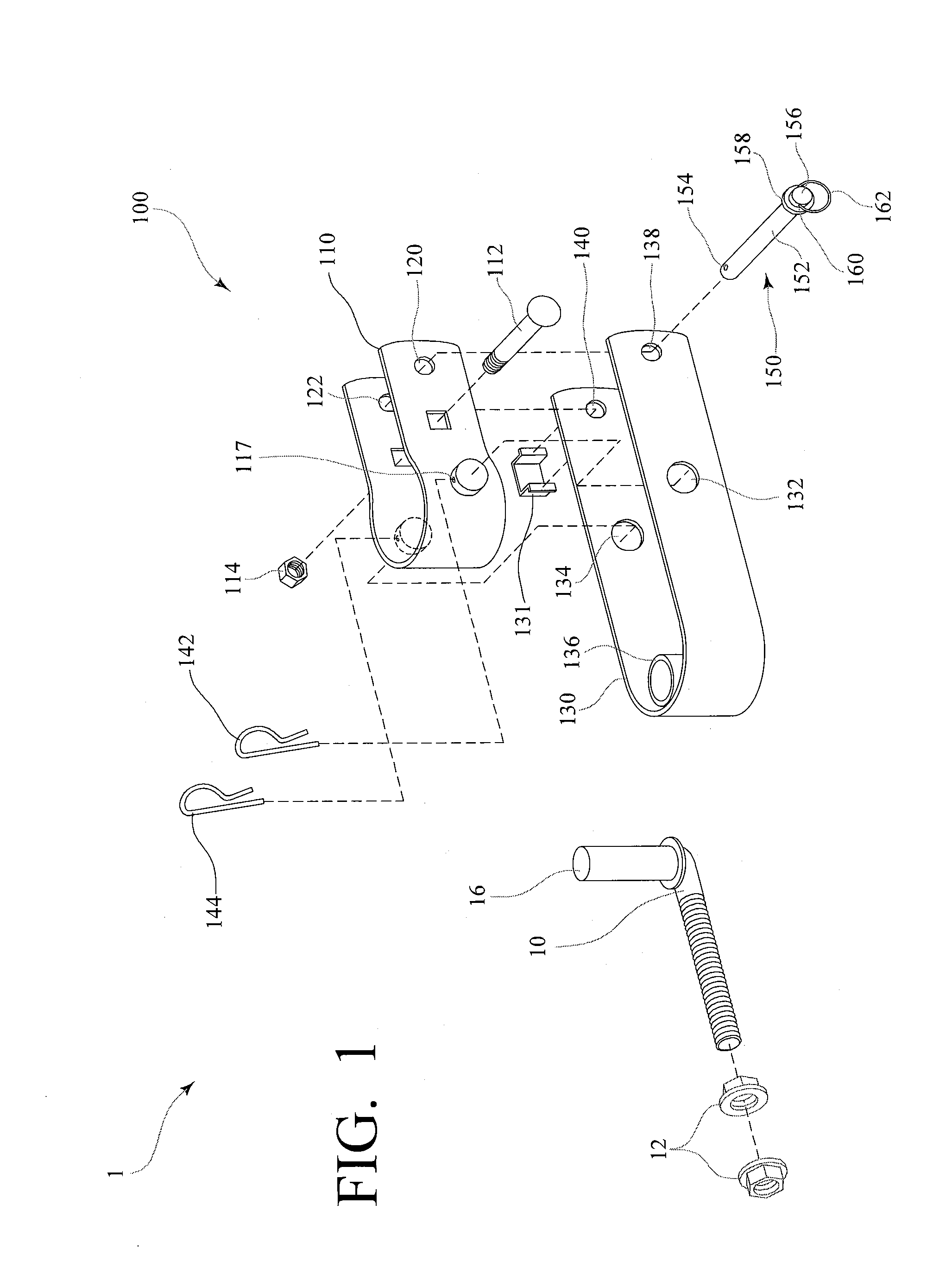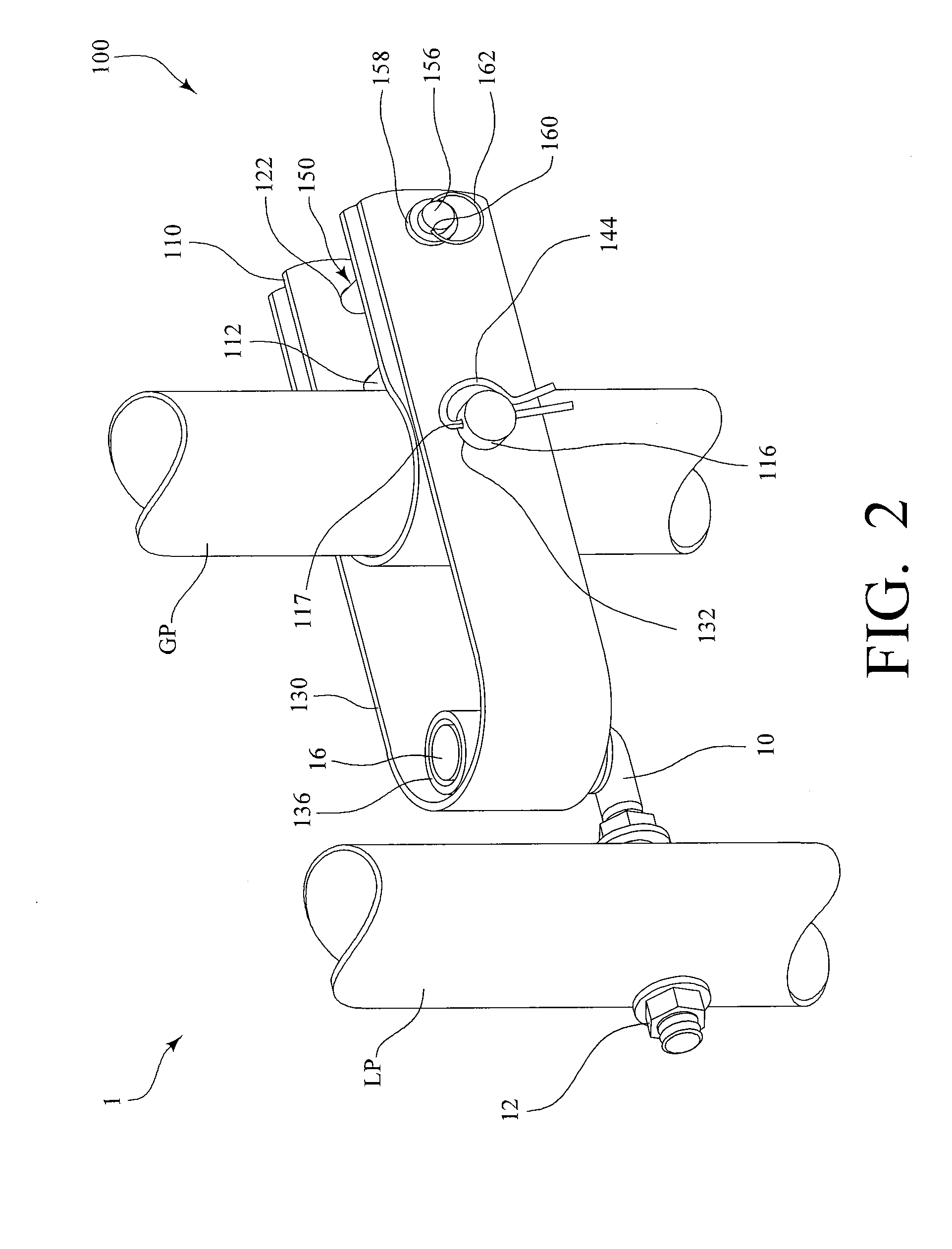Gate stabilizer
a gate and stabilizer technology, applied in the field of gate stabilizers, can solve the problems of gate posts bending or tilting, gate sag in at least two non-exclusive manners, and failure of the gate structure itself, and achieve the effect of reducing the stress on the gate, being convenient to apply, and being convenient to apply
- Summary
- Abstract
- Description
- Claims
- Application Information
AI Technical Summary
Benefits of technology
Problems solved by technology
Method used
Image
Examples
Embodiment Construction
[0021]FIG. 1 shows an embodiment of the present invention —gate stabilizer 1 formed from galvanized steel. In the embodiment shown in FIG. 1, gate stabilizer 1 includes L-shaped support member 10 and stabilizer assembly 100. In the illustrated embodiment, support member 10 is sized to pass through latch post LP as best seen in FIG. 2. Support member 10 is affixed to latch post LP using nuts 12. Support member 10 includes upstanding cylindrical portion 16.
[0022]Still referring to FIG. 1, stabilizer assembly 100 includes fixed member 110. In the embodiment shown in FIG. 1, fixed member 110 is a generally U-shaped member adapted to wrap around the gate post GP as best seen in FIG. 3. In the illustrated embodiment, fixed member 110 is attached to gate post GP by compressing fixed member 110 around gate post GP using bolt 112 and nut 114 (best seen in FIG. 3). Of course other methods of attaching fixed member 110 may be used including, but not limited to, bolting it directly to gate post...
PUM
 Login to View More
Login to View More Abstract
Description
Claims
Application Information
 Login to View More
Login to View More - R&D
- Intellectual Property
- Life Sciences
- Materials
- Tech Scout
- Unparalleled Data Quality
- Higher Quality Content
- 60% Fewer Hallucinations
Browse by: Latest US Patents, China's latest patents, Technical Efficacy Thesaurus, Application Domain, Technology Topic, Popular Technical Reports.
© 2025 PatSnap. All rights reserved.Legal|Privacy policy|Modern Slavery Act Transparency Statement|Sitemap|About US| Contact US: help@patsnap.com



